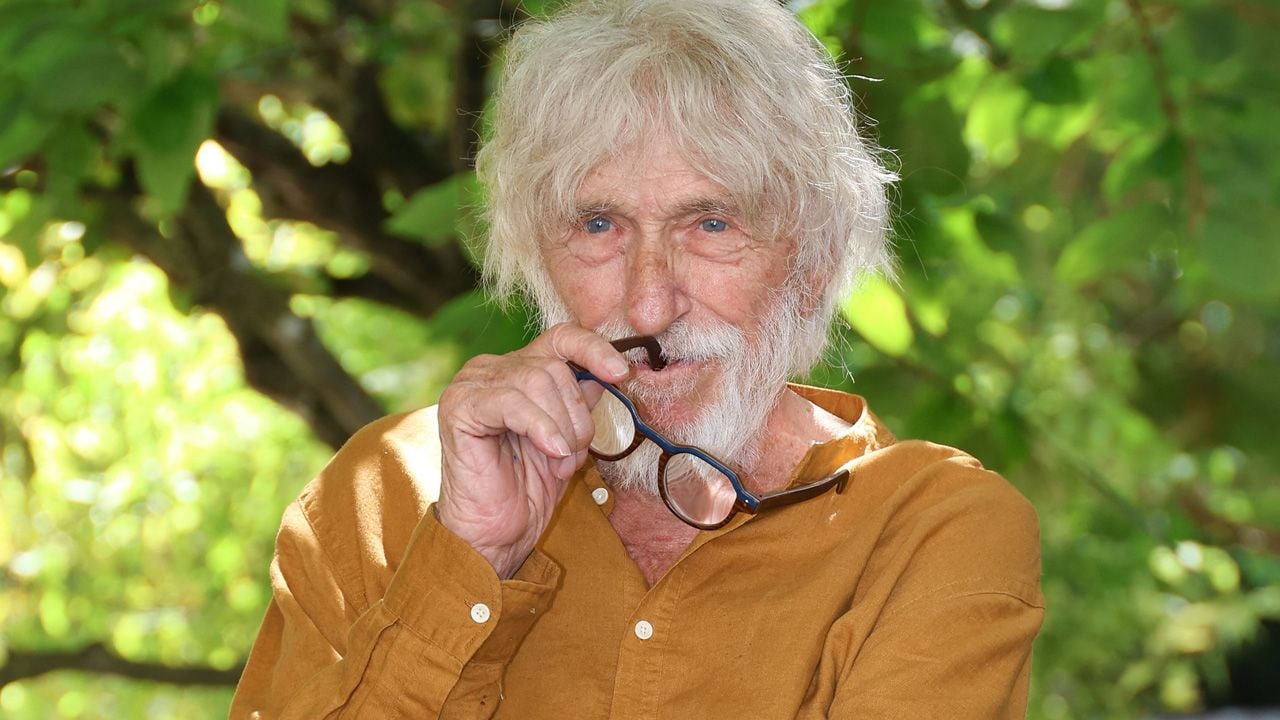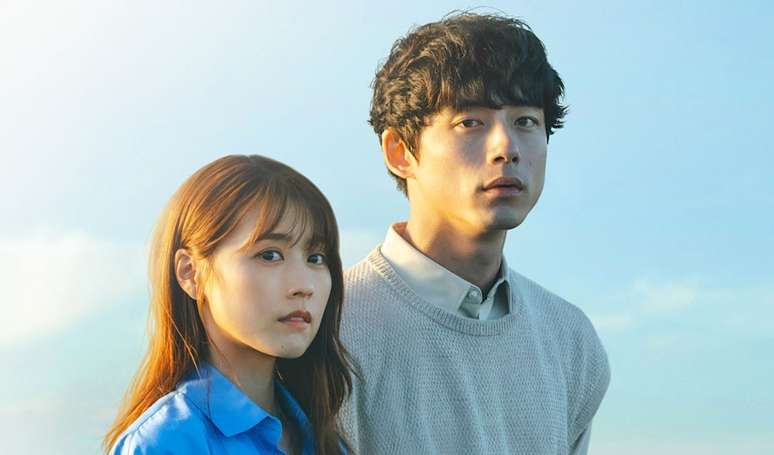The creator and protagonist of the acclaimed Atresmedia series tells us about her experience visiting a prison, as well as the secrets behind the creative decisions of the series, and its generational representation, of drugs or religion.
After the end of the second season of ‘Cardo’, the Atresplayer series that has become one of the most acclaimed television fiction on the national scene, we sat down to talk with its creator and protagonist, Ana Rujas. Maria has taken us on a long and extreme journey, going from television to prison, and along the way she has become a symbol of the generation born in the 1990s. To carry out this second season, Ana Rujas met with prisoners and different associations that help the reintegration of ex-convicts, and even visited a prison. We asked him about this experience that he defines as “fundamental”, and other key aspects of the season such as mental health, addiction to pills or the striking aesthetic resources of the series such as the on-screen thoughts of its protagonist or the use of black and white
We start with your character getting out of prison, I have read that you had real experiences with women in prison. What was that experience like?
Very important, we couldn’t do this season without really getting close to talking to them or having a close story to be able to work with reality. Both Claudia and I, in interpreting, needed to visit a center, talk to them. The department heads went with us and we were there for a whole day, in the Ávila Penitentiary Center and several girls helped us. We also met Ana Lobo, a girl who works with women who have been in prisons and escorts them out. This is what happens to María, being on the street after having been in the center. Ana Lobo helped us a lot, she put us in contact with several girls and it was one of the most beautiful experiences. In addition, we have reflected in ‘Cardo’ those stories that they have told us.
How is your method to adapt all that material after visiting the prison to your experience with the character?
If I had not been in the prison, I think I would not have understood the things that happen to María. That, when working, well I incorporated it with the sessions with Ana Gracia, with whom I prepared the character. We also changed the focus a bit because it really is that being there is a feeling of claustrophobia, like being overwhelmed, of anxiety too, of course, and we also adjusted parts of the script. We press more on anxiety, the fact of being in a place and then going out into the real world when you have been seeing a very different reality for a long time is very important. I think something changes in you.
I found it very courageous to address such a topical issue as social reintegration. In that field work, what did you learn about the life of the prisoners as soon as you left?
We have been in contact with associations and with women who provide support, social workers and educators. I don’t have a specific opinion either because I already told you that we have not delved into the subject either. We are left with the fear that they have when leaving, as if they mark you in some way, and that is a bit of what we wanted to do with María in the first chapter. We wanted to see how she relates to the world with this heavy backpack from now on. It is unknown that there are many associations and women who are dedicated to providing support when someone has to leave and reintegrate. This figure exists to help women who have been inside.

Another of the themes that are present in the second season is mental health, especially through some things that you call institutionalized drugs. How did you work on this theme in season 2?
Well, above all, I am specifically talking about María, who is a bit of the character who channels all of this. She is the order of the day and it seemed to us that it was a subject that right now everyone has touched on, a lot or a little. We are in a society that needs to be someone, do something and have something to tell, and not be stained by anything, not be guilty of anything. And all this generates a lot of anxiety and Maria has a lot. I feel that now nothing happens if you say that you are taking medication, the stigma that existed has been removed a bit, but at the same time it is fashionable and that also causes me a little fear because taking pills cannot be fashionable either What is happening to us so that everyone has to have a Lexatin in their bag! That can’t be normal either. Maria is too addicted to pills right now to face any fear she has after being locked up for a while. And of course, if she runs out of pills, she goes into a crisis.
Wanting to be someone, the impositions of society… ‘Cardo’ paints a portrait of a generation that lives with uncertainty. I find the figure of Santa Teresa de Jesús curious, with planes that emulate portraits, I don’t know if it is to oppose faith to that lack of certainty.
This is how the first chapter ends, when we do all the symbols of Santa Teresa. In the first season the theme of religion is very present, and it was a way of picking it up in the second. Lluís Sellarès, who is one of the scriptwriters of ‘Cardo’, was also the one who brought the figure of Saint Teresa to Claudia and me and we thought it was very good to establish her figure as something much more tangible in the character of María . That is to say, that it was not so much our vision of creators from the outside, but that the character herself had the religious inside. That somehow Santa Teresa takes her and she clings a little to the phrases, texts and poetry of Santa Teresa, like a mantra to save her from her. It’s also a bit like pills. Well, that you cling to something that gives you hope and that takes you to another place that is brighter than where you may be living at that moment, no. In the first chapter we recited a text from Santa Teresa and it was like “oh my gosh, talk about this, right? It seemed perfect to tell it.
I have had the feeling watching ‘Cardo’ that it paints a more accurate portrait of the generation of glass that is being talked about so much these days. I don’t know if you saw a lack of representation of our generation in the Spanish audiovisual.
Well, the truth is that they usually tell us that. But we hadn’t thought about it like, “Look, there’s no series that talks about it this way.” No, I think that everything has been much more intuitive and everything has been part of something much more visceral and wild in some way because of how I and Claudia work. We found a way to tackle a little bit of what we really wanted. When you are creating, it seems to me that I would not go from the outside to see what is missing, but that you really have something that you want to tell and it comes from your heart or you have the desire to do so. There are many creators and creators of our generation who do it, what happens is that the place is missing. And that is what Javier Calvo and Javier Ambrossi gave us, the opportunity to have that place.
In this creative process, there is a part of your own baggage, I don’t know if you also include real experiences that you have had there.
In the first season there was something more from Claudia and me, something more autobiographical, but it always turned into fiction, that is, no, we didn’t want to make a self-fiction. Sometimes I like Maria better than myself, but for me she is a fictional character. At some point we have started from things that are close to us or that we knew, especially in the first season, which is closer to our life. The second season, as you can see, is that it has nothing to do anymore.

How did the idea of making Maria’s thoughts come true on screen?
Well, this came from the beginning almost, it was raised very soon. At first it was more poetic, we had thoughts that filled the entire screen. For me it was like a phrase that took up the entire screen and that didn’t work. We began to see that it worked much better the other way, between us and with the figure of Borja Pakrolsky, which is why we ended up seeing that it had to be more of a direct thought, the first thing that comes to mind.
The use of black and white in this second season is also interesting.
This season we had two temps at the beginning and it was crazy. At first we wanted to do 1 to 3 in black and white and then go back to color because for us it represents heaven a bit, that is, this season goes through heaven, hell and Earth. If you look at the chapter titles they go a bit like this. We went through several places and we kind of wanted to do something in black and white and make it three chapters and go back to color in chapter 4, which is when it changes a little again. Speaking with the Javis, who have also accompanied us throughout the creative process, we saw that there were too many black and white chapters. We were left with a chapter like that in the middle, which also becomes a bit like María’s film and what she has in her head, and then returns to color when she sees reality.
The two seasons of ‘Thistle’ are now available on ATRESplayer Premium.
Source: Fotogramas
Rose James is a Gossipify movie and series reviewer known for her in-depth analysis and unique perspective on the latest releases. With a background in film studies, she provides engaging and informative reviews, and keeps readers up to date with industry trends and emerging talents.






